Exploring Baota Pagoda: A Symbol of Xi’an’s Cultural Heritage
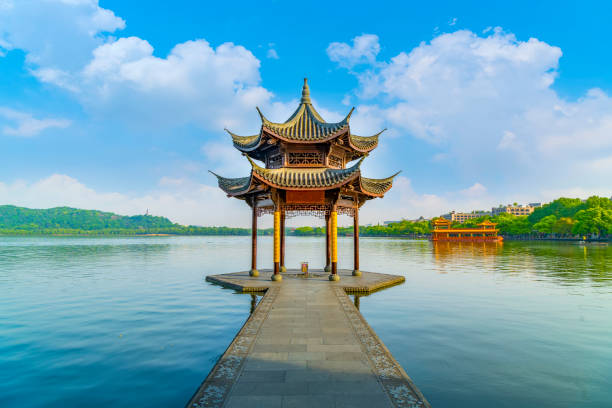
An Essential Guide to Visiting Baota Pagoda
In This Guide
- An Essential Guide to Visiting Baota Pagoda
- The Rich History and Legends of Baota Pagoda
- Main Highlights: What You Absolutely Can’t Miss
- Planning Your Visit: A Practical Guide
- Tickets: Prices, Booking, and Tips
- How to Get There: A Complete Transportation Guide
- Local Cuisine and Accommodation Nearby
- Frequently Asked Questions
- Final Thoughts on Your Trip
Nestled in the scenic hills of Yan’an, the Baota Pagoda (宝塔) stands as a testament to China’s rich history and architectural brilliance. This iconic structure, which translates to “the pagoda of the treasure tower,” not only offers visitors a glimpse into ancient Chinese culture but also presents breathtaking views of the surrounding landscape. As you approach Baota Pagoda, you’ll find yourself enveloped in stories of the past, echoing through the narrow passageways and steep staircases that lead to its summit.
A Journey Through Time
Constructed during the Ming Dynasty, the Baota Pagoda is a remarkable example of traditional Chinese architecture, featuring a distinctive octagonal shape and adorned with intricate carvings. As you ascend its nine stories, each step brings you closer to not just the top, but also the heart of Chinese history—a journey that reflects the resilience and ingenuity of its people.
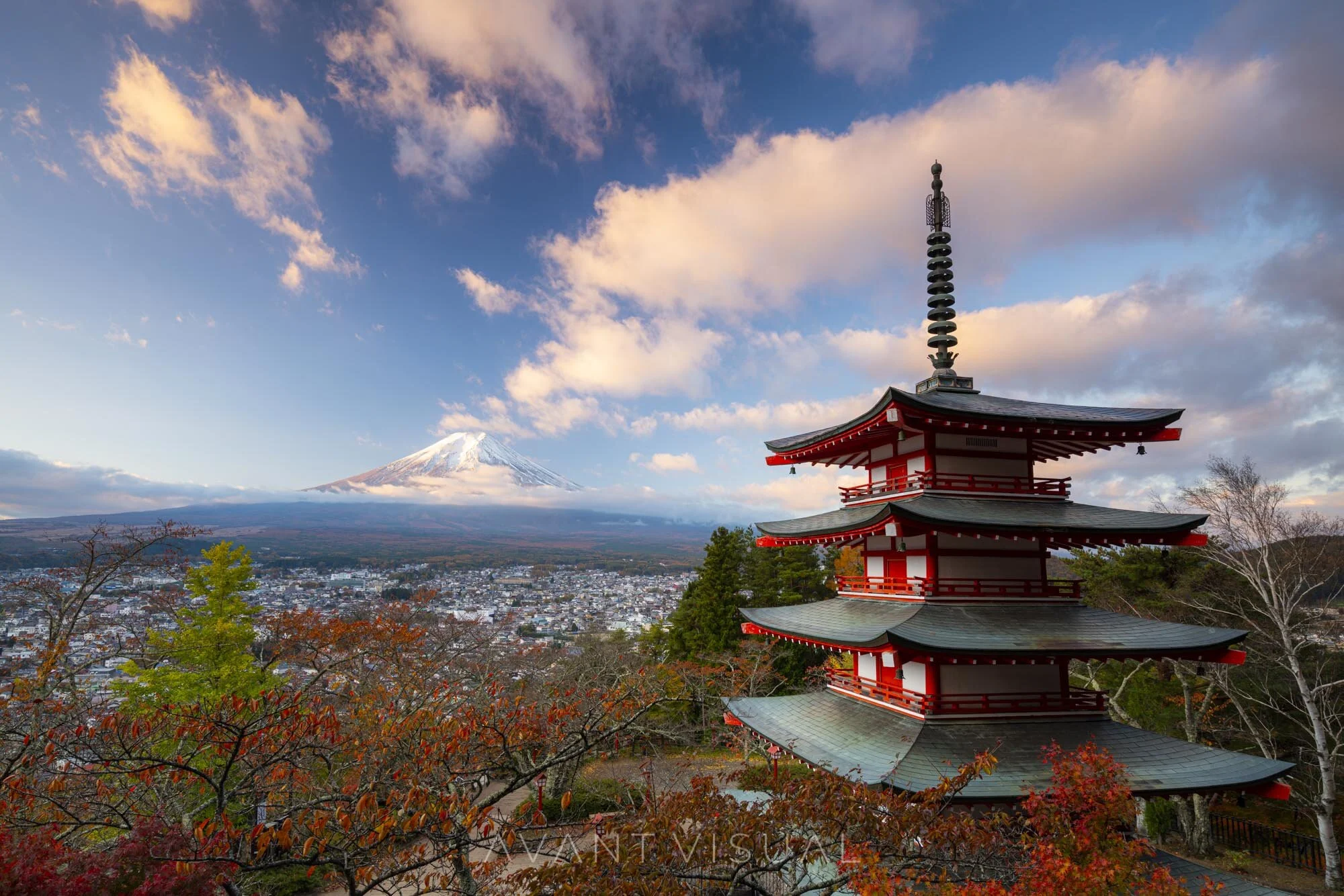
Baota_Pagoda.
Preparing for Your Visit
Before you embark on your ascent, it’s essential to be prepared for the experience. The climb involves navigating narrow staircases and passageways, which can be quite challenging, especially during busy hours. It’s advisable for visitors to wear comfortable shoes and be ready for some physical exertion. Those who may feel claustrophobic should consider this aspect before proceeding.
What to Expect
Upon reaching the top, you will be rewarded with panoramic views that are nothing short of spectacular. The surrounding valleys and mountains create a picturesque backdrop, perfect for capturing memories. Be sure to visit the Sky Pavilion—an ideal spot for landscape photography that showcases the beauty of Yan’an.
Practical Information
- Location: South-east of Yan’an, Baota District, Yan’an 716000, China
- Opening Hours: Daily from 6:00 AM to 9:30 PM
- Nearby Attractions: Don’t miss the Qingliang Mountain and various revolutionary memorials that narrate the stories of China’s past.

Baota_Pagoda.
Visiting Baota Pagoda is not merely a sightseeing trip; it is an immersive journey into the depths of Chinese history and culture. Whether you are a history buff or a casual traveler, this landmark promises an unforgettable experience that captures the essence of China’s enduring legacy.
The Rich History and Legends of Baota Pagoda
Discovering the Legacy of Baota Pagoda
Nestled on the scenic Baota Mountain in Yan’an, the Baota Pagoda (宝塔) is not just a stunning piece of architecture; it’s a monument steeped in rich history and legendary tales that beckon travelers to explore its past. This iconic structure, initially built during the Tang Dynasty (618-907 AD), has stood the test of time and has become a symbol of resilience and cultural significance in China.

Baota_Pagoda.
Historical Significance
-
Origins in the Tang Dynasty: The Baota Pagoda was originally constructed in 1480, during the Ming Dynasty, but its foundations date back to the Tang era. It served both as a Buddhist shrine and a watchtower, offering a panoramic view of the surrounding landscape. The pagoda is a testament to the architectural ingenuity of its time, with its nine stories towering at 43.6 meters, making it one of the tallest ancient structures in the region.
-
Cultural Symbolism: The pagoda, which translates to “treasure tower,” was built to house Buddhist scriptures and relics, emphasizing the deep-rooted connection between the site and the Buddhist faith. It has attracted countless pilgrims and visitors throughout the centuries, reinforcing its status as a spiritual haven.
-
Revolutionary History: Yan’an holds a significant place in modern Chinese history, particularly during the Chinese Communist Party’s (CCP) revolutionary era in the 1930s and 1940s. The Baota Pagoda became a backdrop for important historical events, symbolizing the struggle for liberation and the spirit of the Chinese people. The pagoda remains a poignant reminder of the tumultuous yet transformative years that shaped contemporary China.
Legends and Myths
Beyond its historical dimensions, the Baota Pagoda is woven into the fabric of local legend, adding an air of mystique to its presence.
-
The Tale of the White Snake: One popular legend tells of a white snake that transformed into a beautiful woman. She fell in love with a local scholar and together they climbed Baota Mountain. It is said that the couple’s love story inspired the pagoda’s construction, symbolizing the union of heaven and earth, and the enduring power of love.
-
Guardians of the Pagoda: Local folklore speaks of guardian spirits that protect the pagoda from natural disasters. It is believed that whenever a storm approaches, the spirits awaken to shield the structure, ensuring its survival through the ages. This legend reflects the deep respect the local people have for the pagoda as a guardian of their history and culture.
-
The Echo of Wishes: Visitors often recount a charming belief that if you whisper your wishes while standing at the base of the pagoda, they will be carried by the winds to the heavens, where they will be heard by the deities. This tradition has attracted many hopeful souls, making the pagoda not only a historical site but also a place of personal significance for many.

Baota_Pagoda.
Visiting Today
Today, the Baota Pagoda stands as a proud emblem of Yan’an’s rich heritage, drawing travelers from all corners of the globe. Adventurers are encouraged to climb the narrow stairways of the pagoda, which leads to breathtaking views of the surrounding countryside. The journey to the top is not for the faint of heart; narrow passages require patience and caution. Yet, the effort is rewarded with panoramic vistas that echo the beauty of the legends that surround this ancient structure.
As you explore the Baota Pagoda, take a moment to reflect on the stories that have unfolded within its walls. From the whispers of love to the echoes of revolution, the pagoda invites you to become a part of its ongoing narrative—a narrative that continues to inspire and captivate.
Main Highlights: What You Absolutely Can’t Miss
Discovering the Treasures of Baota Pagoda
When you find yourself in Yan’an, a city steeped in revolutionary history, the Baota Pagoda rises majestically as a beacon of cultural significance. This iconic structure, perched atop Baota Mountain, offers not just breathtaking views but also a deep dive into the rich tapestry of Chinese heritage. Here are the must-see highlights that will enhance your visit to this remarkable site.
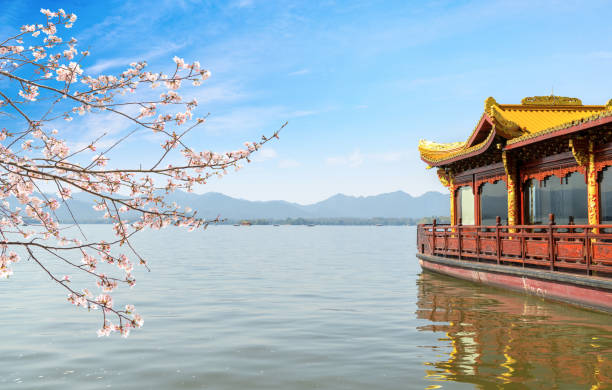
Baota_Pagoda.
1. The Pagoda Itself
A Nine-Story Marvel
Constructed during the Tang Dynasty, the Baota Pagoda is a stunning example of ancient Chinese architecture. Standing at 43 meters (141 feet) tall, this nine-story structure is adorned with intricate carvings and traditional features that reflect the artistry of its time. As you ascend the narrow passageways, take a moment to appreciate the craftsmanship that has stood the test of time.
Climbing to New Heights
Prepare for a workout! The journey to the top involves navigating steep, narrow staircases that can be quite a challenge. As you climb, the views become progressively more rewarding. Each level offers a unique perspective of the surrounding landscape, a feast for the eyes that makes every step worthwhile. Be mindful of your fellow climbers, as the passage is only wide enough for one person, requiring some strategic navigation.
2. The Sky Pavilion
Breathtaking Panoramas
At the pinnacle of your climb, don’t miss the Sky Pavilion. This open area provides an unparalleled vantage point of Yan’an and the lush countryside beyond. The sweeping vistas of the Loess Plateau are particularly stunning at sunset, creating a picturesque backdrop for memorable photos. Capture the moment as the sun dips below the horizon, casting golden hues across the landscape.
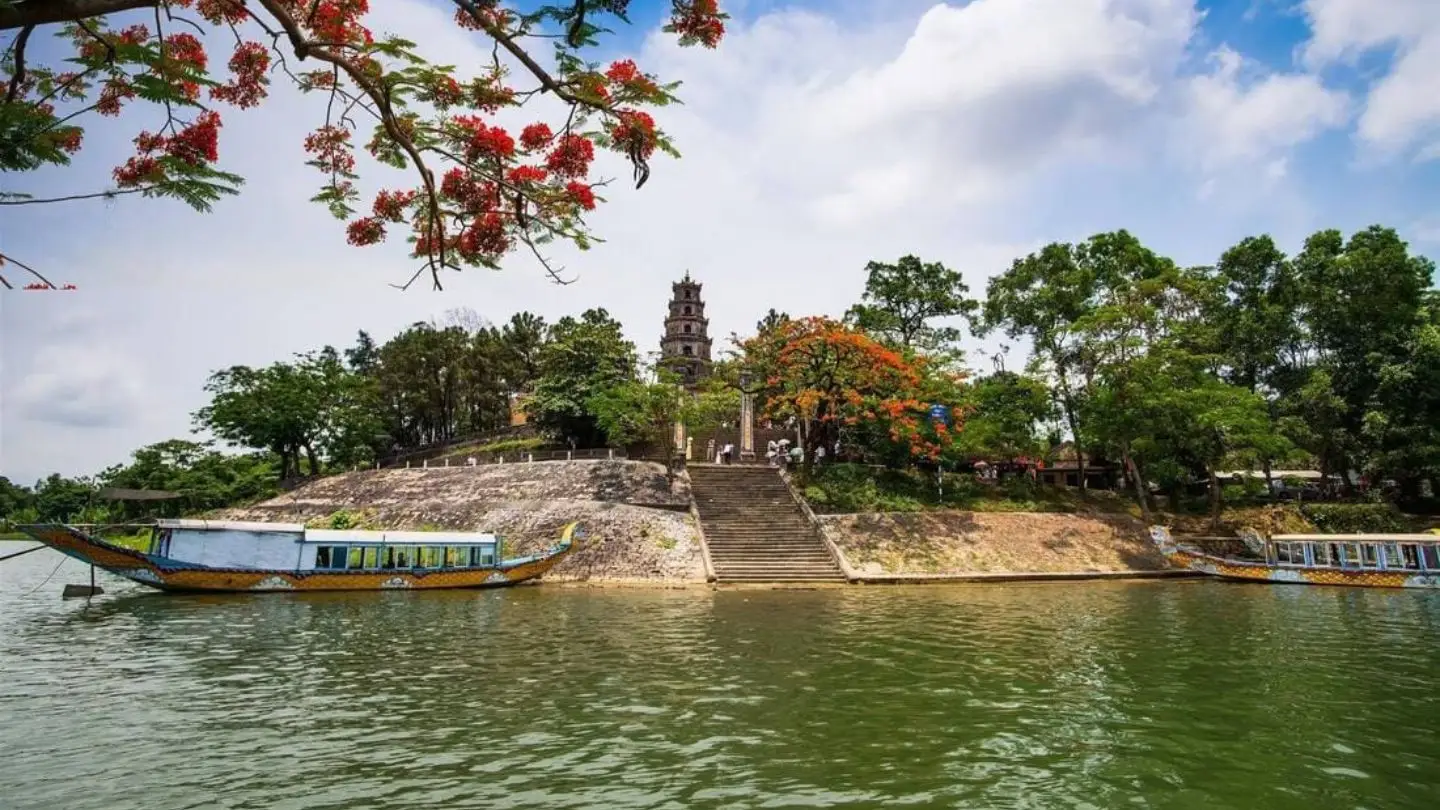
Baota_Pagoda.
3. Surrounding Natural Beauty
A Scenic Retreat
The area around Baota Pagoda is rich in natural beauty. Take some time to explore Baota Mountain itself, where hiking trails wind through verdant scenery and offer opportunities to connect with nature. The gentle rustle of leaves and the chirping of birds provide a serene escape from the bustling city below.
Nearby Attractions
While in the vicinity, consider visiting additional historical sites such as the Qingliang Mountain and the Yan’an Revolutionary Memorial Hall. Each offers unique insights into the region’s revolutionary past and its significance in modern Chinese history.
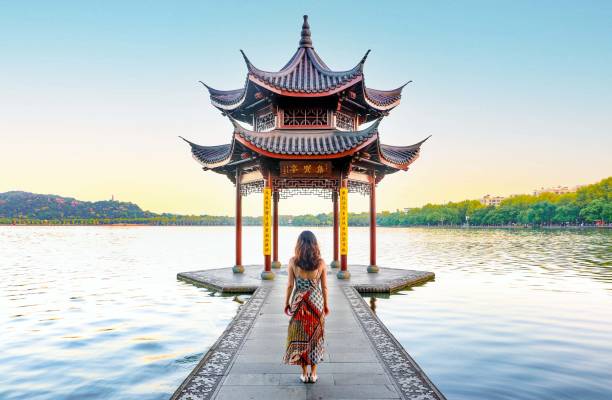
Baota_Pagoda.
4. Cultural Significance
A Symbol of Resilience
Baota Pagoda is not just an architectural marvel; it symbolizes the enduring spirit of the Chinese people. It has witnessed centuries of history, including the pivotal moments of the Chinese Communist Revolution that took place in Yan’an. Engage with the local guides to learn more about its storied past and the role it played in shaping contemporary China.
5. Practical Information
- Opening Hours: The Baota Pagoda is open daily from 6:00 AM to 9:30 PM, making it accessible for both early risers and evening adventurers.
- Location: Situated in the Baota District, just southeast of Yan’an, the pagoda is easily reachable by local transport or a short hike from the city center.
- Visitor Tips: Wear comfortable shoes as the climb can be strenuous. If you’re prone to claustrophobia, consider that the staircases can be quite narrow and crowded.
Conclusion
A visit to Baota Pagoda is a journey through time, offering an extraordinary blend of stunning architecture, breathtaking views, and profound historical significance. Whether you’re a history buff, a photography enthusiast, or simply a traveler seeking beauty, this ancient pagoda is a destination you cannot afford to miss. So lace up your hiking boots and prepare for an unforgettable experience in Yan’an!

Baota_Pagoda.
Planning Your Visit: A Practical Guide
Your Essential Guide to Visiting Baota Pagoda
Visiting the Baota Pagoda (宝塔) is not just about witnessing a significant historical landmark; it’s an immersive journey through ancient Chinese culture and breathtaking natural beauty. Nestled in the scenic Baota District of Yan’an, this iconic structure offers visitors a unique blend of spirituality, history, and stunning vistas. Here’s everything you need to know to make your visit unforgettable.
Getting There
Location: The Baota Pagoda is located southeast of Yan’an, in the Baota District. The pagoda stands proudly on Baota Mountain, providing a commanding view of the surrounding countryside.
Transportation:
– By Air: The nearest airport is Yan’an Airport (ENY), which is approximately 15 kilometers from the pagoda. From the airport, you can take a taxi or pre-arranged transport to reach the site.
– By Train: Yan’an Railway Station is well-connected to major cities like Xi’an. From the station, local buses or taxis can take you to the pagoda.
– Public Transport: Local buses operate frequently to Baota Mountain. Look for buses heading to the Baota District.

Baota_Pagoda.
Best Time to Visit
For optimal weather and scenery, consider visiting between April and October. During these months, the climate is mild, and the natural beauty surrounding the pagoda is at its peak. Morning visits are particularly recommended to avoid crowds and to enjoy the serene atmosphere.
Admission Information
- Hours of Operation: The Baota Pagoda is open from 6:00 AM to 9:30 PM daily. Plan your visit accordingly to make the most of your time.
- Entrance Fee: Check for any seasonal variations in entrance fees, as they may change. It’s advisable to have cash on hand, as some smaller vendors may not accept cards.
Climbing the Pagoda
Prepare for an exhilarating climb! The Baota Pagoda has nine stories and offers narrow passageways and steep stairs that lead to spectacular views from the top. Here are some tips for your ascent:

Baota_Pagoda.
- Wear Comfortable Shoes: The climb can be strenuous, so comfortable footwear is essential.
- Be Mindful of Space: The passageways can be very narrow. Be prepared to navigate carefully and give way to fellow visitors, especially when descending.
- For the Claustrophobic: If you have a fear of tight spaces, you may want to reconsider climbing to the top, as the stairways can feel confined.
Exploring the Surroundings
After visiting the pagoda, take time to explore the surrounding area:
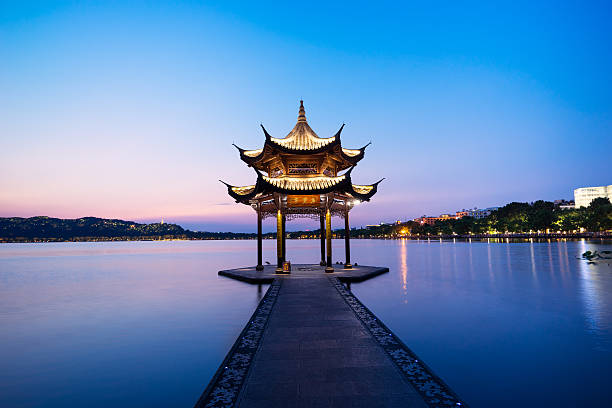
Baota_Pagoda.
- Sky Pavilion: A lovely spot to capture panoramic views of Yan’an and the surrounding landscape.
- Nearby Attractions: Consider exploring other nearby historical sites such as the Revolutionary Memorial Hall, the Former Revolutionary Headquarters, and Qingliang Mountain.
- Dining Options: Fuel up at local cafes and restaurants, like King Coffee or Sha Jia Bang SiFang Cai, which offers authentic Northwestern Chinese cuisine.
Tips for a Successful Visit
- Stay Hydrated: Bring water, especially if you plan to climb the pagoda or explore the surrounding areas.
- Camera Ready: The views from Baota Pagoda are stunning, so don’t forget your camera to capture the scenic landscapes.
- Respect Local Customs: As a significant cultural site, be respectful of the traditions and practices observed by local visitors.

Baota_Pagoda.
Conclusion
A visit to the Baota Pagoda is a step back in time, offering insights into China’s rich history and culture. With its breathtaking views and spiritual significance, it’s an experience not to be missed. Whether you’re an avid historian, a culture enthusiast, or simply looking to enjoy the beauty of nature, Baota Pagoda provides a fulfilling journey that will leave you with lasting memories.
Tickets: Prices, Booking, and Tips
Visiting the Baota Pagoda in Yan’an is not just about admiring its architectural beauty; it’s an opportunity to dive deep into China’s rich history and cultural heritage. To make the most of your visit, it’s essential to understand the ticketing process, prices, and some handy tips that will enhance your experience.
Admission Prices
- General Admission: The ticket price for adults is approximately ¥40 (around $6 USD).
- Discounted Rates: Children, students, and seniors often enjoy a reduced fee, typically around ¥20 (approximately $3 USD).
- Group Discounts: If you’re traveling with a group, inquire about potential group discounts at the ticket counter.
Booking Options
- On-Site Purchase: Tickets can be purchased at the entrance of the Baota Pagoda. This is the most straightforward option, especially for spontaneous visits.
- Online Booking: For those who prefer planning ahead, tickets can sometimes be booked through travel platforms such as Trip.com or Ctrip. Check these sites for availability and any special offers.
- Tour Packages: Consider booking a guided tour that includes Baota Pagoda along with other local attractions. This can provide a richer context and save time.
Opening Hours
The Baota Pagoda is open daily from 6:00 AM to 9:30 PM. Arriving early in the morning or later in the evening allows you to enjoy a quieter atmosphere and stunning views of the surrounding landscape.
Tips for Your Visit
- Dress Comfortably: The climb to the top of the pagoda involves navigating narrow staircases that can be steep and winding. Wear comfortable shoes and be prepared for a bit of a workout!
- Be Mindful of Crowds: Weekends and holidays can see a surge in visitors. If possible, plan your visit for a weekday to avoid the crowds.
- Photography: Don’t forget your camera! The views from the top are breathtaking, especially at sunrise or sunset when the landscape is bathed in golden light.
- Respect Local Customs: As with many Chinese historical sites, be respectful of the local customs and traditions during your visit. This includes maintaining a quiet demeanor and observing any signs indicating restricted areas.
- Plan Additional Activities: The Baota Pagoda is located near other attractions in Yan’an, such as the Revolutionary Memorial Hall and scenic mountain parks. Consider allocating some extra time to explore the rich history of this area.
Whether you are a history buff or simply looking to soak in the views, your experience at the Baota Pagoda will undoubtedly be memorable. Prepare well and enjoy your journey through this significant piece of Chinese heritage!
How to Get There: A Complete Transportation Guide
Navigating Your Way to Baota Pagoda
Visiting the Baota Pagoda (宝塔) in Yan’an is an unforgettable experience that immerses you in China’s rich history and stunning landscapes. To make your journey smooth and enjoyable, here’s a comprehensive transportation guide to help you reach this iconic site.
Getting to Yan’an
By Air:
The nearest airport to Yan’an is Yan’an Ershilipu Airport (ENY), which is approximately 20 kilometers from the city center. Currently, flights from major cities like Beijing and Xi’an operate here. From the airport, you can take a taxi or arrange for a hotel shuttle to reach downtown Yan’an.
By Train:
Yan’an is accessible via train services connecting it to various cities, including Xi’an. The Yan’an Railway Station serves as the main hub. Trains from Xi’an take around 5-6 hours, making it a comfortable option for travelers. Once you arrive at the station, taxis are readily available to take you to the pagoda or other destinations in the city.
By Bus:
Long-distance buses also operate to Yan’an from various locations. Buses from major cities like Xi’an can be caught at the Xi’an Bus Station. The journey typically takes around 6-8 hours. Buses are a cost-effective option, though less comfortable than trains.
Local Transportation
Once in Yan’an, getting to Baota Pagoda is straightforward:
By Taxi:
Taxis are the most convenient way to reach Baota Pagoda. Just inform the driver of your destination, and they’ll take you directly to the pagoda’s entrance. The fare from downtown Yan’an is typically around 15-20 RMB.
By Public Bus:
For those looking to save a bit of money, public buses are available. You can take Bus 3 or Bus 5, which will drop you off near the base of Baota Shan. Keep an eye on local signage, as routes and schedules may vary.
By Bicycle:
For the more adventurous, renting a bicycle is a delightful way to explore the area. Several rental shops can be found in downtown Yan’an. The ride to Baota Pagoda will take about 30-45 minutes, depending on your pace.
Preparing for Your Visit
Keep in mind that visiting Baota Pagoda requires a bit of effort, as you will need to climb the narrow stairways leading up the nine stories. Here are a few tips to ensure a pleasant visit:
- Timing: The pagoda is open daily from 6:00 AM to 9:30 PM. Early morning visits are recommended for fewer crowds and cooler temperatures.
- Comfortable Footwear: Wear sturdy shoes, as the climb can be strenuous.
- Camera Ready: Don’t forget your camera! The views from the top are stunning and well worth the effort.
Nearby Attractions
While you’re in the area, consider exploring other nearby attractions such as Qingliang Mountain, the Revolutionary Memorial Hall, and the Former Revolutionary Headquarters at Wangjiaping. These sites offer further insight into Yan’an’s historical significance, especially during the Chinese Communist Party’s early years.
By planning your transportation and preparing for the physical aspects of the visit, you can fully enjoy the majestic Baota Pagoda and the rich cultural tapestry of Yan’an. Safe travels!
Local Cuisine and Accommodation Nearby
Discovering Local Flavors and Comfortable Stays Near Baota Pagoda
Visiting Baota Pagoda is not only a journey into China’s rich history but also an opportunity to savor the delightful local cuisine and find a cozy place to unwind. Here’s a guide to some of the best dining options and accommodations that will enhance your experience in Yan’an.
Culinary Delights
1. Sha Jia Bang SiFang Cai (沙家浜四方菜)
– Cuisine: Northwestern Chinese
– Distance: Approximately 2.6 miles from Baota Pagoda
– Highlights: This restaurant offers a variety of traditional Northwestern dishes, celebrated for their bold flavors and hearty ingredients. Be sure to try their lamb dishes and hand-pulled noodles, which are local favorites.
2. King Coffee (金咖啡)
– Cuisine: Café
– Distance: About 0.3 miles away
– Highlights: Perfect for a quick bite or a refreshing drink after your climb, King Coffee serves light meals and a selection of coffee that will recharge your energy for further exploration.
3. TaiYang HuaBan ShangDe XiaoWu (太阳花瓣商店)
– Cuisine: Café
– Distance: 0.8 miles from the pagoda
– Highlights: A cozy spot for brunch or an afternoon snack, this café offers a variety of pastries and light bites alongside aromatic teas. Its ambiance makes it a great place to relax and soak in the local atmosphere.
Where to Stay
1. Yan’an Hotel (延安宾馆)
– Star Rating: 4-star
– Distance: Approximately 2 miles from Baota Pagoda
– Overview: This hotel combines modern comforts with traditional hospitality. With well-appointed rooms and a restaurant serving local cuisine, it’s a perfect base for exploring the area.
2. Home Inn (如家酒店)
– Star Rating: Budget-friendly
– Distance: About 1.5 miles from the pagoda
– Overview: Offering clean and comfortable accommodation at an affordable price, Home Inn is ideal for travelers looking for convenience without breaking the bank.
3. HanTing Express (汉庭酒店)
– Star Rating: Budget to mid-range
– Distance: Roughly 1.8 miles from Baota Pagoda
– Overview: Known for its friendly service and comfortable rooms, this hotel provides a welcoming atmosphere and is situated close to several local attractions.
Tips for Your Visit
- Timing Your Meals: Plan your meals around your visit to the pagoda. Early mornings or late afternoons may offer the best experience as you can avoid the crowds.
- Local Specialties: Don’t miss trying Yan’an’s unique dishes, such as rou jia mo (a type of Chinese hamburger) or biang biang noodles, known for their wide, thick strands.
- Cultural Etiquette: When dining in local establishments, it’s customary to share dishes among your party, allowing everyone to enjoy a variety of flavors.
With these recommendations, your trip to Baota Pagoda will not only be a feast for the eyes but also for the palate. Enjoy the rich tapestry of flavors and the warm hospitality that Yan’an has to offer!
Frequently Asked Questions
Frequently Asked Questions About Baota Pagoda
1. What is Baota Pagoda and why is it significant?
Baota Pagoda, or the “Baota” (宝塔), is a historic nine-story pagoda located on Baota Mountain in Yan’an, Shaanxi Province. It is significant as a symbol of Chinese Buddhist architecture and history, representing the cultural and spiritual heritage of the region. The pagoda, originally built during the Tang Dynasty, is not only an architectural marvel but also a site of pilgrimage and a vantage point offering breathtaking views of the surrounding landscape.
2. How do I get to Baota Pagoda?
Baota Pagoda is located southeast of Yan’an city center. You can reach it by taking a local taxi or using public transportation. If you’re driving, ample parking is available near the entrance. The site is well-signposted, making it easy to locate.
3. What are the opening hours?
The Baota Pagoda is open daily from 6:00 AM to 9:30 PM. It’s advisable to arrive early in the morning or later in the evening to avoid crowds and enjoy a more peaceful experience.
4. Is there an entrance fee?
Yes, there is a small entrance fee to access the Baota Pagoda and its surroundings. The fee contributes to the maintenance and preservation of the site. It’s a nominal amount that allows you to experience this historical landmark.
5. What should I wear when visiting the pagoda?
Comfortable clothing and sturdy footwear are recommended, especially since you’ll be climbing narrow stairs to reach the top of the pagoda. Consider dressing in layers, as temperatures can vary throughout the day, and bring a hat or sunscreen for sun protection.
6. Are there facilities for visitors?
Yes, there are basic facilities, including restrooms and places to rest along the way. However, it’s wise to bring water and snacks, as options may be limited within the immediate vicinity of the pagoda.
7. Is the climb to the top suitable for everyone?
The climb to the top of Baota Pagoda involves navigating narrow, steep stairs that ascend through nine stories, which may not be suitable for those with mobility issues or severe claustrophobia. Visitors should be prepared for a physically demanding experience and take their time to enjoy the views along the way.
8. What else can I do in the area?
While visiting Baota Pagoda, consider exploring nearby attractions such as the Revolutionary Memorial Hall, Qingliang Mountain, and various historical sites significant to the Chinese Communist Party’s history. The area is rich in culture and offers a glimpse into China’s revolutionary past, making it a perfect complement to your visit to the pagoda.
Final Thoughts on Your Trip
As you prepare to leave the serene embrace of Baota Pagoda and Baota Mountain, take a moment to reflect on the journey you’ve undertaken. This historical site is not just a structure but a connection to the rich tapestry of Chinese history and culture. Here are a few final thoughts to inspire your memories:
Embrace the Climb
While the ascent to the top of the pagoda can be challenging, every step offers a deeper appreciation of the stunning landscapes that unfold before you. The narrow passageways may test your resolve, but they also lead to breathtaking views that reward your effort. Remember, the higher you climb, the more beauty you discover.
A Tapestry of History
The Baota Pagoda, with its storied past dating back to the Ming Dynasty, stands as a testament to the resilience and artistry of ancient Chinese architecture. Each brick tells a story, and as you stand at its pinnacle, you are enveloped by the echoes of history—reminding us of the enduring spirit of the people who once walked these paths.
A Gateway to Further Exploration
Your visit to Baota Pagoda is merely the beginning. The surrounding area is rich with additional historical sites and natural beauty, including revolutionary landmarks and breathtaking mountain vistas. Consider extending your journey to uncover the layers of history that Yan’an has to offer.
Cherish the Moments
Above all, cherish the moments spent absorbing the beauty and tranquility of Baota Mountain. Whether it’s the laughter shared with fellow travelers or the quiet contemplation enjoyed in the shadow of the pagoda, these are the treasures that will remain with you long after your visit.
As you head back to your travels, may the spirit of Baota Pagoda accompany you, igniting a passion for discovery and a deeper understanding of the world’s rich cultural heritage. Safe travels!